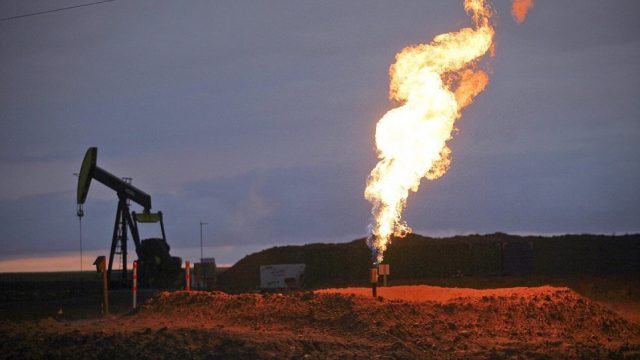Time For Oil Boom Critics To Give Some Credit On Flaring

To hear some environmental activists and political partisans tell it North Dakota’s oil boom is an ecological disaster. “We’re destroying western North Dakota,” they chorus.
Most recently they’ve been pointing to a (deeply flawed) series of stories by the New York Times which suggest a cozy relationship between the oil industry and state regulators has resulted in spiking oil spills (spoiler alert: the state’s spill rate is actually going down). But before the Times visited the state all we were hearing about was natural gas flaring.
Democrats in the legislature attempted to pass laws in 2013 to curb flaring. Activists decried satellite photographs they claimed showed flaring lighting sparsely-populated western North Dakota up brighter than some of the nation’s largest urban centers (some of it was flaring, a lot of it were the bright lights on drilling rigs).
And to be sure, flaring is a problem. Setting aside environmental concerns, who among us likes to see a valuable commodity burned up?
But you don’t hear much about flaring any more, because the state’s oil and gas leadership – the Republican leadership we’re told is too bought off by oil industry interests to regulate responsibly – charged the oil industry with reducing flaring, and the industry has responded admirably.
The percentage of gas flared in North Dakota has plummeted in recent months (after a spike over last winter caused by a major Hess-owned gas processing plant in Tioga going down for expansions) to well under a target percentage set by the North Dakota Industrial Commission:

But the flaring percentage doesn’t tell the whole story. Gas production in North Dakota has soar alongside oil production in recent years. Minute ups and downs in the flaring percentage really didn’t tell us much about the volume of gas being flared because the total amount of gas being produced was increasing dramatically.
This chart shows total gas produced, gas sold, and gas flared. As you can see, the industry has pulled off the herculean task of catching up with booming gas production and not only stopping growth in the volume of gas flared but actually reducing it:

What’s sad, bordering on pathetic, is that neither North Dakota’s regulators nor the oil industry will get much in the way of credit for this accomplishment, remarkable as it is. The complainers who, let’s face it, are more concerned with stopping fossil fuel development than safe and responsible production have already moved on to the next talking point.




